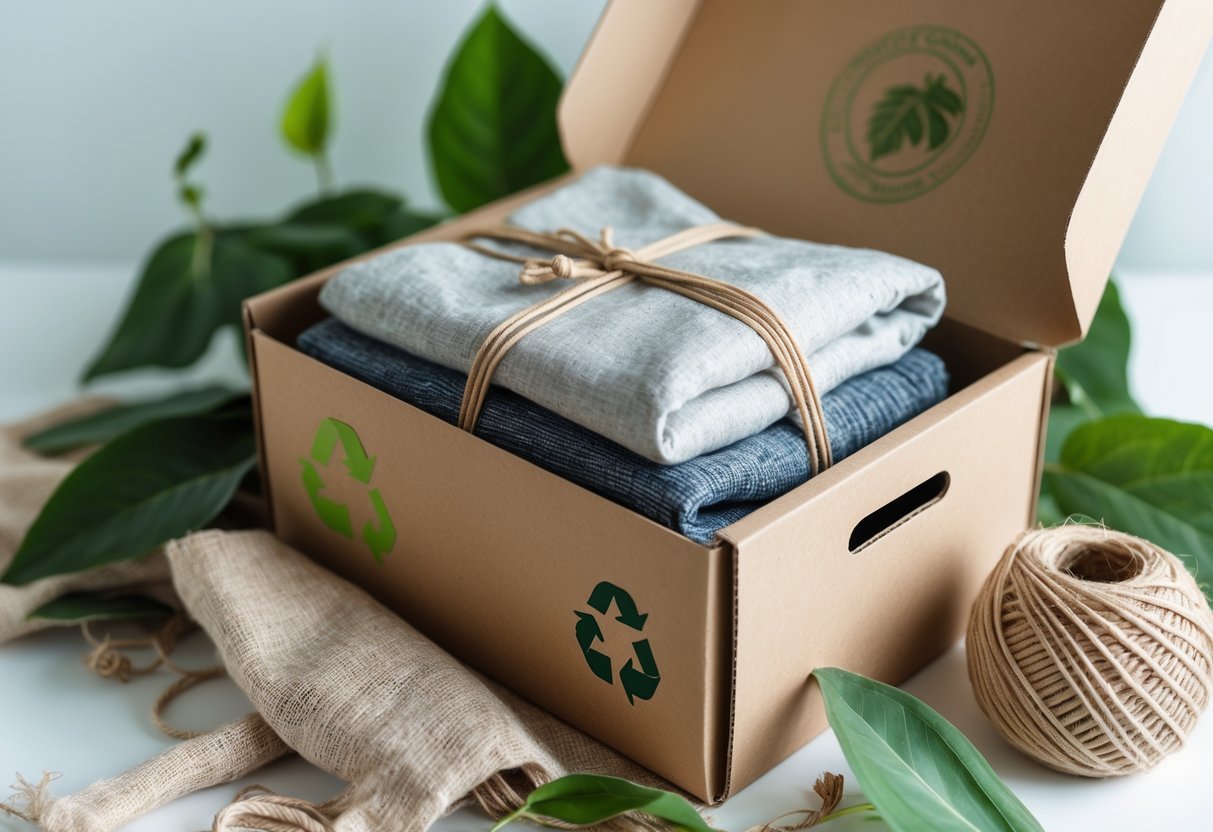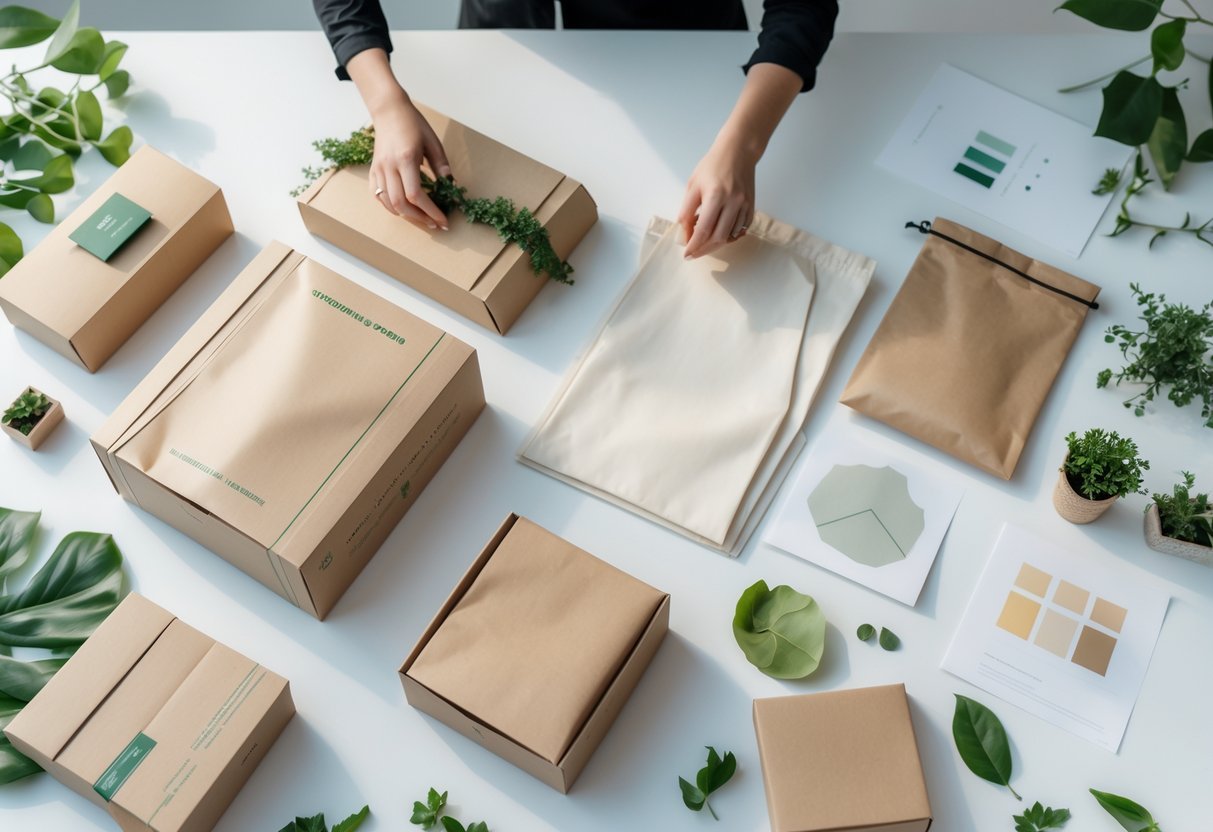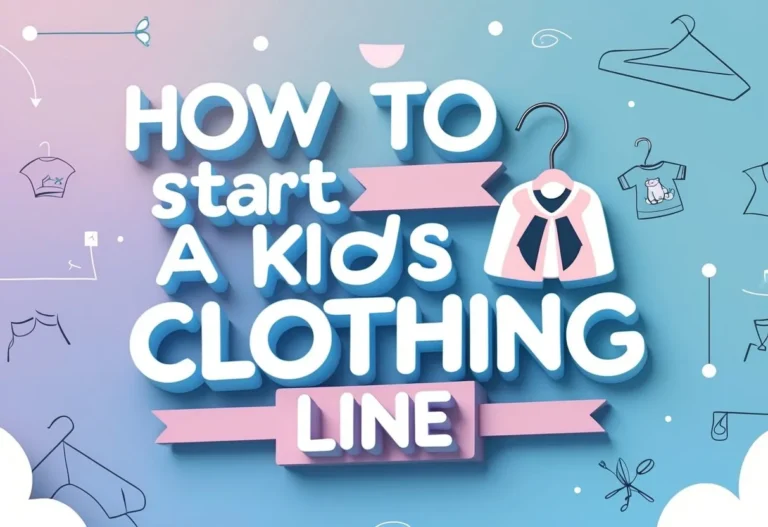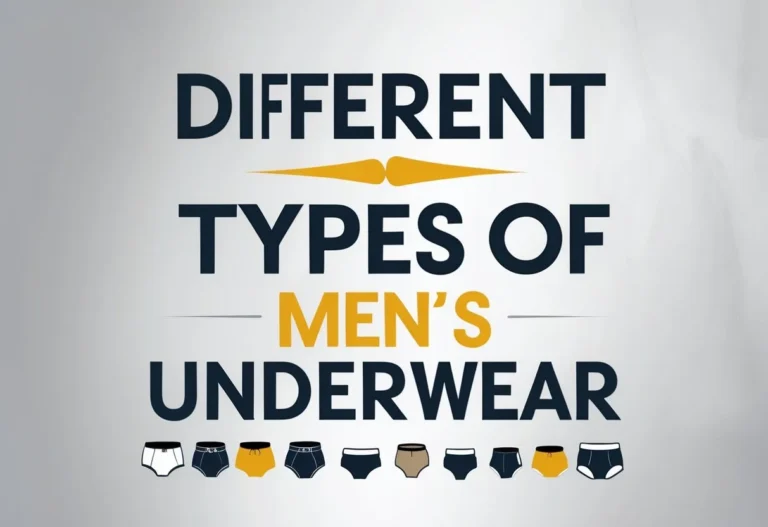Sustainable packaging for clothing is becoming a key focus for brands that want to reduce waste and protect the environment. It includes using materials that break down naturally or can be recycled instead of traditional plastics. This shift helps lower the environmental impact of packaging while keeping clothing safe during shipping.

Many companies now choose biodegradable plastics, recycled cardboard, and compostable options. These materials not only protect apparel but also show customers that the brand cares about sustainability. Packaging is no longer just about function; it also plays a role in creating a positive brand image through eco-friendly choices.
The future of clothing packaging lies in creative, minimal designs that reduce excess waste and use smart materials. These efforts help meet growing consumer demand for sustainable products and support a more circular fashion industry.
Key Takeaways
- Sustainable packaging uses eco-friendly materials that reduce environmental harm.
- Packaging choices help brands communicate their commitment to sustainability.
- Smart design and material selection are key to future packaging solutions.
Understanding Sustainable Packaging for Clothing

Sustainable packaging in clothing focuses on using materials and designs that reduce environmental impact while supporting broader sustainability goals. It involves choices that lower waste, encourage reuse, and meet the growing demand for responsible products. This approach affects how brands create, deliver, and market their clothing.
What Makes Packaging Sustainable
Sustainable packaging uses materials that are recycled, recyclable, compostable, or biodegradable. Brands avoid traditional plastics and instead rely on recycled paper, cardboard, or plant-based alternatives. The goal is to reduce single-use packaging and lower pollution.
Minimalist designs also contribute by using less material overall. This reduces waste and shipping weight. Water-based inks replace harmful petroleum-based inks to further lessen environmental harm.
Reusable or circular packaging promotes a closed-loop system. Customers can return packaging for reuse or recycling. This extends the life of materials and cuts down on landfill waste.
The Role of Packaging in Clothing Sustainability
Packaging in clothing protects products but also impacts a brand’s environmental footprint. Eco-friendly packaging helps reduce the amount of waste generated across the supply chain.
Sustainable packaging supports responsible sourcing and manufacturing by relying on materials with lower environmental costs. It complements efforts to reduce waste during production.
Brands committed to sustainable packaging often partner with suppliers to innovate new materials. These include biodegradable plastics and packaging made from agricultural waste, which are less damaging to nature.
Packaging also helps communicate a brand’s values. Using eco-friendly packaging shows a company’s dedication to environmental responsibility, which can improve its reputation.
Consumer Expectations and Industry Trends
Eco-conscious shoppers expect brands to offer sustainable packaging. They want clear information about how products are packaged and how to dispose of packaging responsibly.
To meet these demands, many clothing brands have reduced packaging size and weight. Some have introduced reusable garment bags or boxes. Circular packaging systems are gaining popularity because they keep materials in use longer.
Brands educating consumers on recycling or composting packaging encourage responsible disposal. This helps reduce environmental impact after purchase.
Trends in the industry show a growing shift toward transparency and accountability in packaging choices. Sustainable packaging is now seen as essential, not optional, for brands focused on long-term success.
Key Materials in Sustainable Clothing Packaging

Sustainable clothing packaging uses materials designed to reduce waste and environmental impact. These materials often come from recycled sources or break down naturally. The choices focus on durability, cost-effectiveness, and meeting consumer demand for greener options. Brands balance these factors when selecting packaging.
Recycled Cardboard and Paper
Recycled cardboard is a top choice for eco-friendly packaging. It is made from post-consumer waste, reducing the need for new raw materials and saving energy. This material is lightweight yet strong enough for shipping clothing safely.
Many brands use kraft bags and boxes made from recycled cardboard because they are easy to recycle again after use. This cuts landfill waste and lowers carbon footprints.
Recycled paper can be shaped into bags, boxes, or wrapping, offering flexibility for different products. It also appeals to customers who prioritize green packaging. Using recycled materials saves costs compared to some plastics and supports circular recycling systems.
Recycled Plastics and Poly Mailers
Poly mailers made from recycled PET (rPET) help reduce plastic waste by reusing existing plastics. These mailers protect clothes during shipping while cutting down on the use of new plastic.
Recycled poly bags are lighter than cardboard, which lowers shipping emissions. However, they may be harder to recycle in some areas due to contamination or sorting challenges.
Biodegradable plastics sometimes appear as alternatives, but true recycling of plastic is more common in poly mailers. Brands often blend recycled plastics with biodegradable features to balance function and sustainability.
Using recycled plastics appeals to eco-conscious shoppers who want to avoid single-use plastics but need durable packaging.
Compostable and Biodegradable Options
Compostable mailers break down completely into natural elements like water, carbon dioxide, and biomass under composting conditions. These come from plant-based materials such as cornstarch or polylactic acid (PLA).
Biodegradable packaging breaks down faster than traditional plastic but may leave some residues. Compostable materials are preferred when complete breakdown without pollution is critical.
These packaging types reduce landfill waste and are popular with brands emphasizing zero pollution. Compostable bags and mailers often maintain strength and protect clothing during shipping.
Consumers who want eco-friendly brands often look for compostable labels. Proper disposal systems are important to ensure these materials break down as promised.
Reusable and Fabric-Based Packaging
Reusable fabric packaging offers an alternative to single-use containers. Made from materials like organic cotton, hemp, or bamboo, these bags can be used multiple times, reducing overall waste.
Fabric packaging works well for high-end and eco-conscious brands. It adds value for customers while supporting sustainability goals.
These materials are biodegradable but durable, making them ideal for specialty clothing packaging or gift wrapping.
Reusable bags can be washed and repurposed, increasing their life span. They reduce demand for disposables and often improve brand image by showing a strong commitment to environmental care.
Types of Sustainable Packaging Solutions

Sustainable packaging for clothing involves specific materials and designs that cut waste and protect products. Each option offers unique benefits like durability, biodegradability, or reusability. Choosing the right solution supports eco-friendly efforts and meets customer expectations in different sales channels.
Mailer Boxes and Shipping Boxes
Mailer boxes and shipping boxes are commonly made from recycled cardboard. They are strong yet lightweight, providing safe shipping while reducing environmental impact. Many brands choose custom mailer boxes to highlight their sustainable values and create a professional look.
Recycled cardboard boxes are fully recyclable and use less energy in production compared to new materials. This type of packaging fits various clothing sizes and shapes because it can be easily customized.
They are ideal for e-commerce because of their durability and ease of recycling. Brands like H&M use these boxes to reduce plastic waste and appeal to eco-conscious shoppers. Using recycled cardboard lowers cost and aligns well with green marketing strategies.
Bags: Kraft, Poly, and Reusable
Kraft bags are made from natural paper and are recyclable and biodegradable. These bags have a rustic, simple appearance that many brands find attractive for sustainable packaging. They can be customized with branding while remaining eco-friendly.
Poly bags used for shipping clothes are now often biodegradable or compostable, made from materials like cornstarch or recycled plastics. These options break down faster in the environment than traditional plastic bags, cutting landfill waste.
Reusable bags, made from fabrics like bamboo or organic cotton, are increasingly popular. They reduce single-use waste and add value to the packaging experience. Luxury brands especially favor fabric bags to complement their green image and offer long-term use.
Tissue Paper, Hang Tags, and Accessories
Sustainable tissue paper is made from recycled or compostable materials, providing lightweight protection inside boxes or bags. It adds a layer of care while staying eco-friendly and can be printed with soy-based inks to reduce toxicity.
Hang tags made from recycled paper or cardboard serve as both labels and marketing tools. Brands can use them to share sustainability messages or product care tips, increasing customer awareness.
Accessories like custom clothing packaging ribbons or stickers are also shifting to compostable or reusable materials. These small details contribute to the overall eco-friendly appeal without adding unnecessary waste. They help complete the sustainable packaging story in a subtle but important way.
Designing Packaging for Reduced Environmental Impact

Effective sustainable packaging lowers waste and energy use while keeping the product safe. It also enhances the unboxing experience without harming the environment or increasing costs.
Minimizing Carbon Footprint
Reducing carbon footprint starts with selecting materials that require less energy to produce and transport. Lightweight packaging cuts transportation emissions and saves fuel. Using recycled or renewable resources like recycled cardboard or biodegradable plastics lowers greenhouse gases linked to production.
Manufacturers should also consider local sourcing to reduce shipping distances. Avoiding excess packaging prevents waste and unnecessary emissions. Designing packaging that can be reused or easily recycled further lessens environmental impact.
Tracking the entire supply chain carbon footprint helps brands identify where they can make the biggest improvements. This includes energy use in factories, delivery routes, and end-of-life disposal.
Optimizing Packaging Size and Materials
Choosing the right size packaging is crucial to controlling material waste. Oversized boxes lead to extra filler materials and more shipping volume, increasing emissions. Custom clothing packaging that fits the product snugly reduces those needs.
Materials should be strong enough to protect clothes but avoid excess weight or thickness. Paper-based mailers and recycled cardboard are common choices that balance sustainability and durability.
Minimalist design lowers material consumption by cutting unnecessary layers or inserts. It also simplifies recycling, as mixed materials often complicate disposal. Labels and inks should be eco-friendly and avoid harmful chemicals.
Branding and Customization with Sustainability in Mind
Brands can strengthen their message by combining eco-friendly packaging with clear design. Using natural fibers, soy-based inks, and simple printing methods improves the environmental profile while standing out visually.
Customization like reusable fabric wraps or tote bags adds value for customers and reduces waste. Thoughtful design creates a positive unboxing experience, connecting sustainability with brand loyalty.
Clear messaging about the packaging’s green benefits encourages consumers to recycle or reuse. Packaging that protects products without extra plastic or unnecessary layers aligns with both sustainability and brand identity.
End-of-Life Considerations for Packaging

Packaging end-of-life choices affect how materials are managed after use, impacting waste and environmental health. Understanding the options for disposal and reuse helps brands design packaging that meets sustainability goals and supports circular systems.
Recycling and Composting Pathways
Clothing packaging often uses recyclable materials like paper and certain plastics. Proper recycling depends on local infrastructure and whether materials are clean and free from contaminants. Recycled packaging reduces demand for virgin resources but may degrade after several cycles, eventually needing other disposal methods.
Compostable mailers and packaging made from organic materials break down in compost facilities. They return nutrients to the soil and reduce landfill waste. However, compostable materials require specific conditions to decompose properly and must be free from toxins. Composting packaging alongside food waste can shift disposal to more sustainable pathways, especially for brands focused on organic or natural products.
Reusability and Circularity in Packaging
Reusable packaging increases material lifespan by allowing multiple uses before disposal. This approach reduces the volume of post-consumer waste. For clothing, reusable boxes or bags can be returned and refilled, supporting circular business models. Not all materials are suitable for reuse, especially if they pose health risks or degrade quickly.
Circularity in packaging means designing for continuous recovery and reuse. Brands must align packaging materials with product types and end-of-life strategies. Using post-consumer waste materials in packaging production supports the circular economy by giving waste a second life rather than sending it to landfill or incineration. This approach strengthens sustainability but requires clear communication with consumers for proper disposal or return.
The Future of Sustainable Packaging in Fashion

Sustainable packaging in fashion is moving toward smarter materials, stronger rules, and better customer involvement. These changes aim to reduce waste and improve the way brands connect with eco-conscious shoppers. Innovation and responsibility are shaping how packaging will look and work in the years ahead.
Innovative Materials and Technologies
New materials are key to making packaging eco-friendly. Brands are exploring biodegradable options like mushroom-based packaging and algae plastics. These materials break down naturally without harming the environment, greatly reducing landfill waste.
In addition to materials, technology advances help create reusable and smart packaging. For example, some designs allow packaging to be returned, reused, or composted easily. Technologies that track packaging life cycles also help brands minimize their environmental impact.
These innovations offer durability and style while meeting the growing demand from shoppers who want sustainable choices. The shift to biodegradable and renewable materials is making packaging both functional and planet-friendly.
Regulations and Industry Standards
Governments and industry groups are establishing rules to ensure packaging meets environmental goals. Regulations focus on reducing single-use plastics and requiring labels that show recyclability or compostability.
Standards help companies adopt best practices like using recycled content and minimizing excess packaging. These rules push the fashion industry toward transparency and accountability.
Compliance is becoming a key factor for brands wanting to stay competitive. Meeting these standards helps companies reduce waste and appeal more to eco-conscious shoppers who expect responsible packaging from their favorite labels.
Promoting Eco-Conscious Shopper Engagement
Engaging shoppers is essential in encouraging sustainable habits. Clear labeling that highlights biodegradable or recycled packaging helps consumers make informed choices.
Brands use education and marketing to explain packaging benefits and disposal methods. This builds trust and encourages repeat purchases from customers who prioritize the environment.
Involving consumers through rewards or take-back programs boosts participation. When shoppers see their efforts matter, they become active partners in reducing waste and supporting a greener fashion industry.
Frequently Asked Questions
Sustainable Packaging for Clothing involves choosing the right materials, reducing waste, and adopting methods that lower environmental impact. Brands focus on efficient designs, cost management, and using packaging that can break down safely after use.
How can clothing brands implement eco-friendly packaging effectively?
Brands can start by using recycled or compostable materials and reducing the amount of packaging per item. They should consider minimalist designs that use fewer resources and switch to printing with water-based inks to lessen environmental harm.
Collaboration with packaging suppliers helps find innovative, circular packaging solutions that can be reused or returned. Educating customers on recycling and proper disposal also supports sustainability goals.
Which materials are considered the most sustainable for clothing packaging?
Recycled paper, cardboard, and compostable plastics top the list. These materials either come from recycled content or naturally break down after use.
Water-based inks are preferred for printing as they reduce harmful chemical use. Some brands also explore packaging from agricultural waste and plant-based materials for added environmental benefits.
In what ways are companies reducing their carbon footprint with sustainable clothing packaging?
Companies reduce impact by cutting down single-use plastics and using recycled content. They adopt Sustainable Packaging for Clothing and design packaging to be lighter and simpler.
Switching to biodegradable materials and optimizing supply chains to minimize waste and transportation emissions also help lower carbon footprints.
What are the cost implications of switching to sustainable packaging for small fashion businesses?
Initial costs may be higher due to sourcing new materials and changing production methods. However, sustainable packaging can reduce waste disposal fees and improve brand image, which may attract more customers over time.
Small businesses often find that investing in minimalist designs and Sustainable Packaging for Clothing and sustainability effectively.
How does biodegradable packaging impact the lifecycle of clothing items?
Biodegradable packaging breaks down naturally after disposal, reducing landfill waste. It does not affect the durability or lifespan of clothing but ensures that the packaging leaves less environmental impact after use.
This helps brands meet environmental standards and appeal to eco-conscious consumers.
Can you recommend best practices for shipping clothes sustainably?
Use packaging made from recycled or compostable materials. Avoid extra plastic fillers and minimize packaging size to reduce waste and shipping costs.
Encourage customers to reuse or Sustainable Packaging for Clothing . Partnering with eco-friendly courier services and optimizing shipping routes can further reduce environmental impact.






